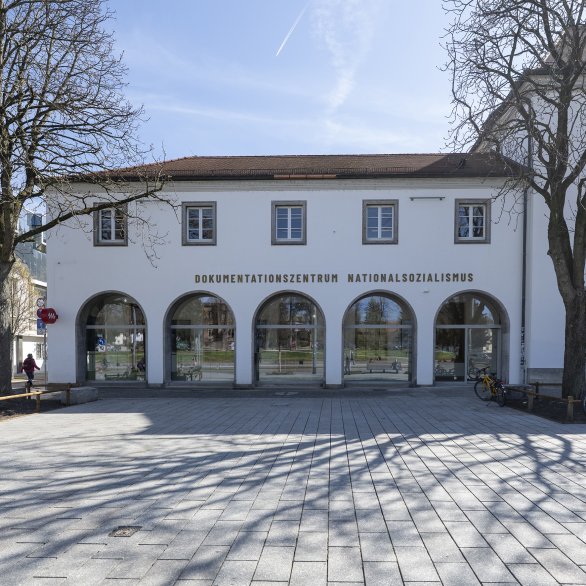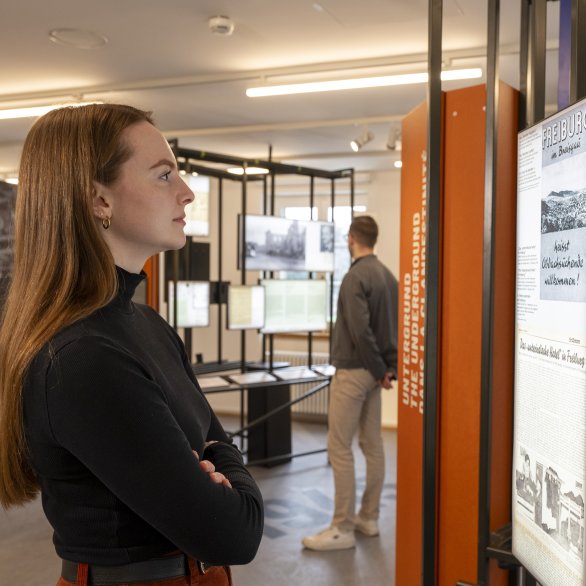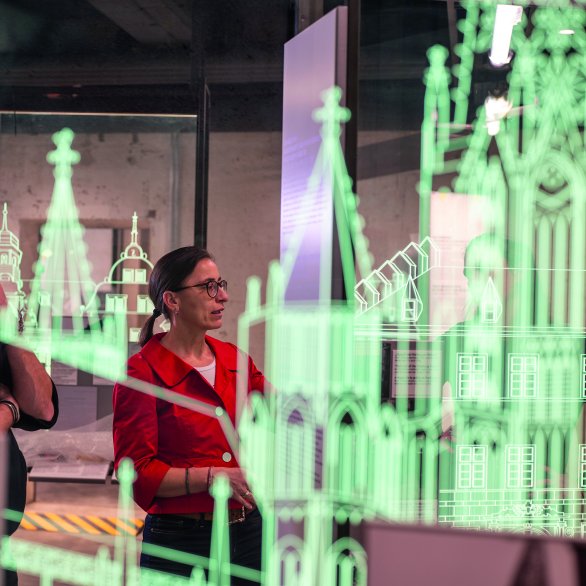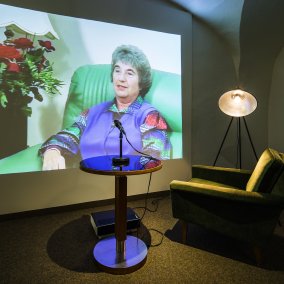The Dokumentationszentrum Nationalsozialismus (DZNS) is a place of learning and remembrance. It is housed in the former tourist information centre which includes a
civilian air-raid shelter dating from 1936. As an historical location, the building is listed and its own past is part of the exhibition.
The permanent exhibition is dedicated to the history of Freiburg and the surrounding region from 1918 up to the present day, with particular focus on the period of the Nazi dictatorship. Visitors are guided chronologically through time by historical objects, reproductions, interactive elements and digital media. They refer to the biographies of various different actors, specific places and events and thus provide a vivid depiction of what happened. A common thread is supplied by the coloured plinths which comment on and highlight potential for acts of resistance by individuals and groups.
The effects of National Socialism, the struggle for recognition by those who were persecuted and the reappraisal of the Nazi past are not over, and the exhibition invites visitors to reflect further on the subject.
A memorial room in the covered inner courtyard remembers the people of Freiburg who were persecuted and murdered under National Socialism. All known names can be read here and are constantly being added to. Projections and an app provide photos and information on individual people. Foundation stones from the synagogue, wich was destroyed in 1938, are embedded in the floor; this area is dedicated to those Freiburg residents who were persecuted as Jews.
civilian air-raid shelter dating from 1936. As an historical location, the building is listed and its own past is part of the exhibition.
The permanent exhibition is dedicated to the history of Freiburg and the surrounding region from 1918 up to the present day, with particular focus on the period of the Nazi dictatorship. Visitors are guided chronologically through time by historical objects, reproductions, interactive elements and digital media. They refer to the biographies of various different actors, specific places and events and thus provide a vivid depiction of what happened. A common thread is supplied by the coloured plinths which comment on and highlight potential for acts of resistance by individuals and groups.
The effects of National Socialism, the struggle for recognition by those who were persecuted and the reappraisal of the Nazi past are not over, and the exhibition invites visitors to reflect further on the subject.
A memorial room in the covered inner courtyard remembers the people of Freiburg who were persecuted and murdered under National Socialism. All known names can be read here and are constantly being added to. Projections and an app provide photos and information on individual people. Foundation stones from the synagogue, wich was destroyed in 1938, are embedded in the floor; this area is dedicated to those Freiburg residents who were persecuted as Jews.



